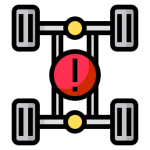
The procedure of deleting the inspection
 The procedure of deleting the inspection
The procedure of deleting the inspection
Each new car has a light that, after a specified time or after driving a certain number of kilometers, reminds us to make:
- technical inspection of the car,
- oil changes,
- exchange of car fluids,
- filter replacement.
The so-called inspection control is one of the key car controls. Operating all the time, it lights up when the time or number of kilometers set by the manufacturer indicate that it is time to perform routine inspection and change of oils, filters and some fluids. After checking and replacing, such a control must be deleted so that the time and kilometers counting can be carried out again.
Technical review and deleting inspections
Technical inspection of the car can take place:
- at the diagnostic station, this is the so-called inspection of the technical condition of the car, carried out by a car diagnostician,
- in a mechanical workshop and it is a technical inspection of the car, carried out every specific number of kilometers or a certain time. It is assumed that for a car over 3 years old, it should be carried out every 10,000 km or every 6 months.
We will describe the technical review carried out in the car workshop. This review aims to:
- general checking of the technical condition by a mechanic,
- exchange of fluids, oils and filters,
- replacing bulbs,
- performing basic repairs.

Car manufacturers strictly specify the time of subsequent inspections and replacements of fluids and oils. The car signals such a need with an inspection indicator. At this point, the car owner goes to the workshop, where the procedure is carried out, then the mechanic cancels the inspection, which counts the next kilometers or time until the next inspection.
By choosing our car service, you choose a professionally made technical inspection of the car, along with the replacement of all necessary oils, fluids and filters. Our experience and knowledge make us well know both the shortcomings and strengths of individual car models, thus being able to perform more efficient work during routine mechanical inspections.






